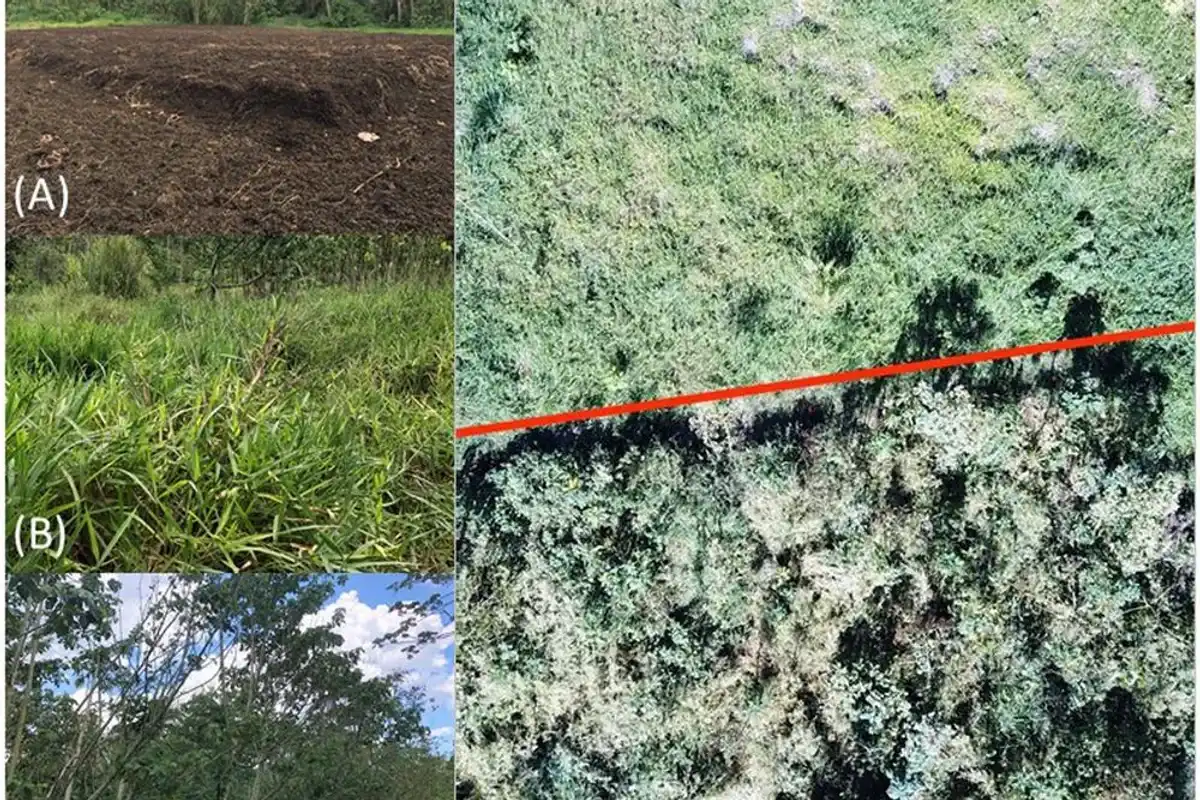Researchers dumped coffee waste into a forest and couldn't believe what it looked like 2 years later
We used to throw away 10 million tons of coffee pulp every year. These researchers may have found a better use for it.

Spreading coffee pulp over barren land lead to rapid forest growth.
Coffee, believe it or not, seems to be an ever-expanding market. The hot or cold, caf or decaf beverage gets more and more popular every year. That's in part due to the fact that people are drinking coffee younger and younger. Surely, you've seen the 10-year-olds ordering oatmilk shaken espressos out in the wild, and the high-schoolers starting each day with a hot cup of joe.
It's great news for Starbucks and Folgers, but maybe not such great news for the environment. Because one of the biggest problems with coffee production is that it generates an incredible amount of waste. Once coffee beans are separated from cherries, about 45% of the entire biomass is discarded. So for every pound of roasted coffee we enjoy, an equivalent amount of coffee pulp is discarded into massive landfills across the globe.
That means that approximately 10 million tons of coffee pulp is discarded into the environment every year. When disposed of improperly, the waste can cause serious damage soil and water sources.
However, a new study published in the British Ecological Society journal Ecological Solutions and Evidence has found that coffee pulp isn't just a nuisance to be discarded.
It can have an incredibly positive impact on regrowing deforested areas of the planet, of which there are also increasingly many.

In 2018, researchers from ETH-Zurich and the University of Hawaii spread 30 dump trucks worth of coffee pulp over a roughly 100' x 130' area of degraded land in Costa Rica. Remember, coffee pulp is made from the discarded bits of coffee cherries, not from used grounds. The experiment took place on a former coffee farm that underwent rapid deforestation in the 1950s.
The coffee pulp was spread three-feet thick over the entire area.
Another plot of land near the coffee pulp dump was left alone to act as a control for the experiment.
"The results were dramatic." Dr. Rebecca Cole, lead author of the study, said. "The area treated with a thick layer of coffee pulp turned into a small forest in only two years while the control plot remained dominated by non-native pasture grasses."
In just two years, the area treated with coffee pulp had an 80% canopy cover, compared to just 20% of the control area. So, the coffee-pulp-treated area grew four times more rapidly. Like a jolt of caffeine, it reinvigorated biological activity in the area.
The canopy was also four times taller than that of the control.

The coffee-treated area also eliminated an invasive species of grass that took over the land and prevented forest succession. Its elimination allowed for other native species to take over and recolonize the area.
The coffee pulp did two things. First, it suppressed invasive grasses so that native growth could flourish. And second, it greatly elevated the nutrients in the soil, boosting phosphorous, carbon, and nitrogen levels – all key elements for rapid new growth.
"This case study suggests that agricultural by-products can be used to speed up forest recovery on degraded tropical lands. In situations where processing these by-products incurs a cost to agricultural industries, using them for restoration to meet global reforestation objectives can represent a 'win-win' scenario," Dr. Cole said.
If the results are repeatable it's a win-win for coffee drinkers and the environment.

Researchers believe that coffee treatments can be a cost-effective way to reforest degraded land. They may also work to reverse the effects of climate change by supporting the growth of forests across the globe. With a staggering 10 million hectares of land deforested globally every year (a hectare is an area of 10,000 square meters, just imagine 10 million of those) it's an urgent issue that could decide the fate of our entire planet.
The 2016 Paris Agreement made reforestation an important part of the fight against climate change. The agreement incentivizes developing countries to reduce deforestation and forest degradation, promote forest conservation and sustainable management, and enhance forest carbon stocks in developing countries.

"We hope our study is a jumping off point for other researchers and industries to take a look at how they might make their production more efficient by creating links to the global restoration movement," Dr. Cole said.
This article originally appeared three years ago. It has been updated.

